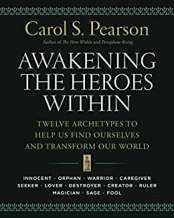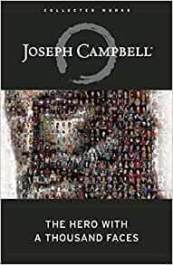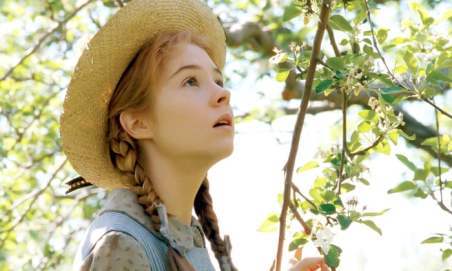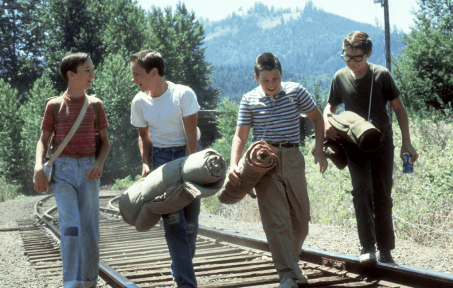Archetypal Character Arcs, Pt. 16: The Flat Archetype of the Child
 In many ways, the Child is hardly a Flat or unchanging archetype at all. Even though we often perceive and remember childhood as a chapter in which everything remained the same (until suddenly it didn’t), the years before puberty are, of course, some of the most rapidly transformational of any part of our lives.
In many ways, the Child is hardly a Flat or unchanging archetype at all. Even though we often perceive and remember childhood as a chapter in which everything remained the same (until suddenly it didn’t), the years before puberty are, of course, some of the most rapidly transformational of any part of our lives.
I suppose you could argue for another important life arc in there somewhere. And yet for all children, there is also a definitive sameness to this period of life. No matter our individual personalities or family circumstances, we are all children—innocents, blank slates. More than that, we are free from the responsibility of growth that arrives with burgeoning adolescence and the onset of the Maiden Arc (which, as mentioned throughout this series, can and should be taken by everyone).
At first glance, the Child archetype also seems to be lacking in the Flat-Arc ability to transform the story world or supporting characters. However, I think any adult who has had a child enter his or her life will attest that few grown-ups are as utterly transformative and growth-inducing as are children!
More than that, the Child is often a surprisingly (if unwittingly) wise archetype. If we recognize that story structure always come full circle, we can see how the final character arc of the life cycle—the enlightened Mage—is in many ways a fulfilled return to the Child’s deep connection to and instinctive understanding of life.

Awakening the Heroes Within by Carol S. Pearson (affiliate link)
In her book Awakening the Heroes Within: Twelve Archetypes to Help Us Find Ourselves and Transform Our World, Carol S. Pearson opens her cycle of archetypes with what she calls the Innocent and ends (even after her Magician) with the Fool—which she also calls the Wise Innocent and which she considers the highest of all the archetypes. She speaks of this end-of-life return to the beginning in a way that highlights many of the inherent if unconscious attributes of the Child archetype:
So the circle is now complete, and we are ready to experience the cycle again—but this time beginning a new level. Because we have learned to enjoy life for its own sake, we need not protect our innocence with denial or hold on to conventionality to protect our “social places.” We know it is safe to trust, not so much because bad things do not happen in life but because we have learned about our great resilience.

The Hero With a Thousand Faces Joseph Campbell (affiliate link)
If the Mage’s full-circle epiphany ends the life arcs, then it is the Child at the beginning who represents all this capacity for joy, innocence, trust, and resilience—but from a place of no power and no experience. As such, the Child is necessarily an archetype of deep vulnerability. As Joseph Campbell says in The Hero With a Thousand Faces:
…just beyond the parental watch is danger to the infant…
A fortunate Child will be protected from those dangers until adolescence finally demands an opening of the eyes and an embarkation upon the initiatory journey of the Maiden Arc. But even Children who are not forced to precipitously undertake their first change arc will still encounter many opportunities for adventures and discovery—particularly as they witness and influence the growth of supporting characters around them.
The Child Archetype: Untapped PotentialPrevious Arc: [None]
Subsequent Positive Arc: Maiden
Subsequent Negative Archetypes: Damsel (passive); Vixen (aggressive)
The Maiden Arc is traditionally the “YA” time of a person’s life—beginning as early as puberty but often not fully completing until the mid to late teens. Therefore, the Child is an archetype we generally find represented by characters younger than thirteen or so. Their stories (as written by adults) are often full of magic and nostalgia. Even if the plot itself revolves around adults in difficult or even dark circumstances, the story is poignantly represented through the limited understanding of the Child protagonist.
Classics such as Anne of Green Gables and To Kill a Mockingbird show us adult worlds through the eyes of Child protagonists. Even when heavy subjects are at play (problematic foster systems and racial injustice, respectively), the stories themselves are surprisingly whimsical.

Despite whatever difficulties these Child protagonists may have so far endured in their lives, they have yet maintained their innocence. They are yet “one” with society’s protective figures, un-individuated from those whom they trust (or at least hope) will care for their needs. They haven’t yet cultivated the cynicism or irony of someone who has learned “what the world is really about”—namely, taking responsibility for one’s self.
Anne of Green Gables is an obvious (and perhaps extreme) example of a Child protagonist who starts the story having undergone severe neglect and even abuse at the hands of foster families, and yet who miraculously and tenaciously clings to her childish wonder of a world that she persists in believing is glorious, romantic, and even magical.

The Child is an archetype of untapped potential. We all know this character will grow up, will hit puberty, will be confronted with the Maiden’s challenges of growing up. The innocence will be shaken and fade for at least a time. But within the Child archetype, we also find the promise of what can be reclaimed if this character is able to faithfully complete the cycle of life arcs.
The Child’s Normal WorldThe Normal World in which the Child begins the story is, at least symbolically, the Home. It is a comparatively small place, bounded by the rules, protection, and hopefully love of the Parent or other protective figure. Already we see where later archetypes might show up (the Parent/Queen as well as perhaps older siblings in the guise of Maiden or Hero).
Within this world, the Child has a surprising amount of freedom. Unlike later archetypes, the Child has few responsibilities imposed either from without or from within. The Child is free to roam, to play, and to discover. And usually, it is this propensity for discovery that creates the dilemmas and opportunities for the story’s plot.

Trixie Belden and the Mystery Off Glen Road by Julie Campbell (affiliate link)
Many an episodic children’s series (such as one of my childhood favorites, Trixie Belden) centers around the protagonist’s incorrigible curiosity and the mysteries they keep sniffing out book after book. Particularly in stories aimed at a child audience, these protagonists never change much, never grow up. But their innocence in “not knowing any better” often leads them to insights that the adults around them would never have noticed.
Some stories feature a Normal World that is not safe and static, but that is changing right around the Child protagonist, even though the Child doesn’t yet notice. The Child has no idea life is about to forever change (and probably launch a Maiden Arc). Rather, the character romps through the last halcyon adventures of a dying age, such as in Rob Reiner’s classic film Stand by Me, set in the 1950s (and based on a Stephen King story).

Although the Child will likely learn many things, he or she will not fundamentally change except perhaps at the very end of the story with the foreshadowing of the inevitable Maiden Arc to follow. Instead, as with all Flat-Arc characters, the Child will (probably unwittingly) convey a thematic Truth to at least one supporting character, who will change as a result. (The supporting character may or may not undergo a fully developed archetypal journey, depending on how prominent the role is.)
Because the Child has not, in fact, learned any archetypal Truths at this point in his or her young life, the thematic Truths in these stories tend to focus around the perennial themes and gifts of childhood: innocence, joy, love, presence, playfulness, loyalty, etc. The naïvety and innocence of the Child allows the character to believe in the uncorrupted virtues that many adults struggle with and/or mourn for the rest of their lives.
How the Child Creates Change in Supporting CharactersUnlike other Flat archetypes, the Child has not yet personally gleaned Truths that can be shared with younger characters. All of the characters will either be fellow Children at the same level of innocence or older characters who are much farther along the archetypal journey of growth.
And yet, the Child’s purity and innocent wisdom still has the ability to profoundly impact the change arcs of supporting characters. Even if the supporting characters should resist the change inspired by the Child, the audience will still understand the profundity of the Child’s simplicity. The Child has the opportunity to offer a sort of “redemption” or “return to innocence” for older, more hardened supporting characters. We can see this in Anne of Green Gables, in which the buoyant orphan Anne revitalizes the lonely and hardened older couple with whom she comes to live, and in Oliver Twist, in which Oliver (another orphan) inspires compassion and (ultimately fatal) virtue in the prostitute Nancy who tries to help him escape the criminal underworld of London.

Even more than with most Flat-Arc archetypes, the possibilities for the type of story are particularly vast. The story can be fun and funny or dark and dangerous. It can be about the relationship between the Child and other Children, or about the Child and any of the adult archetypes. It may be a story of redemption for an adult character, or it may be a story about a family overcoming adversity. It can be set in any time or place and can be framed within any genre. It can be written for children or for adults.
Cozy mysteries and memoir-like adventures are popular and fun. But serious social commentaries from a child’s perspective, as in To Kill a Mockingbird, can be all the more powerful for their atypical narrator/protagonist.
In many ways, the “untapped potential” of the Child archetype makes it one of the most versatile of all the Flat archetypes. In fact, writing a Child character can invite us back into the uncensored creative options of this foundational period in all our lives.
Examples of the Child:Examples of the Child archetype include the following. Click on the links for structural analyses.
Scout Finch in To Kill a Mockingbird Tom Sawyer in Tom SawyerAnne Shirley in Anne of Green GablesOliver Twist in Oliver TwistJohnny Dorset in “The Ransom of Red Chief”Nat Cooper in Forever YoungTrixie Belden in Trixie BeldenGordie LaChance in Stand by MeStay Tuned: Next week, we will study the Flat archetype of the Lover.
Related Posts:
Story Theory and the Quest for MeaningAn Introduction to Archetypal StoriesArchetypal Character Arcs: A New SeriesThe Maiden ArcThe Hero ArcThe Queen ArcThe King ArcThe Crone ArcThe Mage ArcIntroduction to the 12 Negative ArchetypesThe Maiden’s Shadow ArchetypesThe Hero’s Shadow ArchetypesThe Queen’s Shadow ArchetypesThe King’s Shadow ArchetypesThe Crone’s Shadow ArchetypesThe Mage’s Shadow ArchetypesIntroduction the 6 Flat ArchetypesWordplayers, tell me your opinions! Can you think of any further examples of stories that feature the Child? Tell me in the comments!Click the “Play” button to Listen to Audio Version (or subscribe to the Helping Writers Become Authors podcast in Apple Podcast or Amazon Music).
___
Love Helping Writers Become Authors? You can now become a patron. (Huge thanks to those of you who are already part of my Patreon family!)The post Archetypal Character Arcs, Pt. 16: The Flat Archetype of the Child appeared first on Helping Writers Become Authors.




